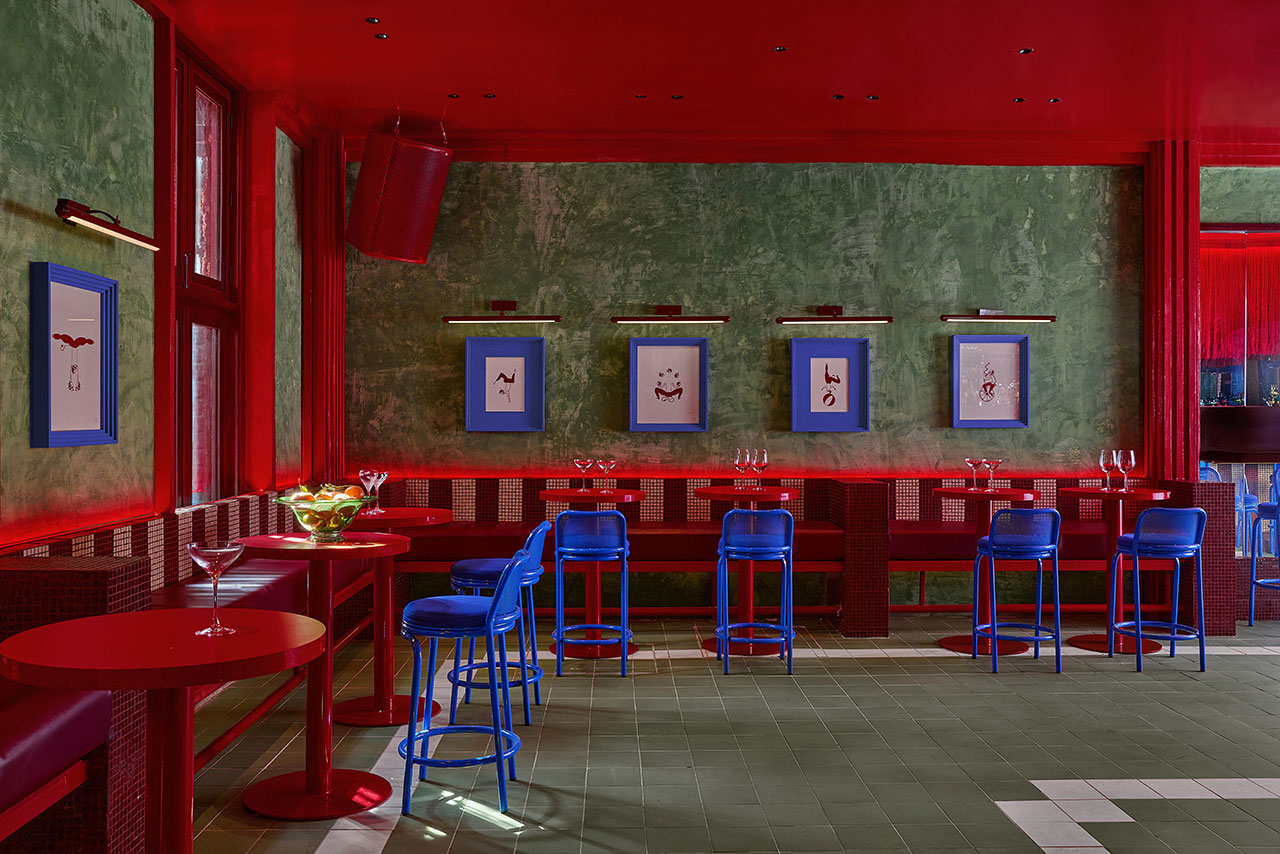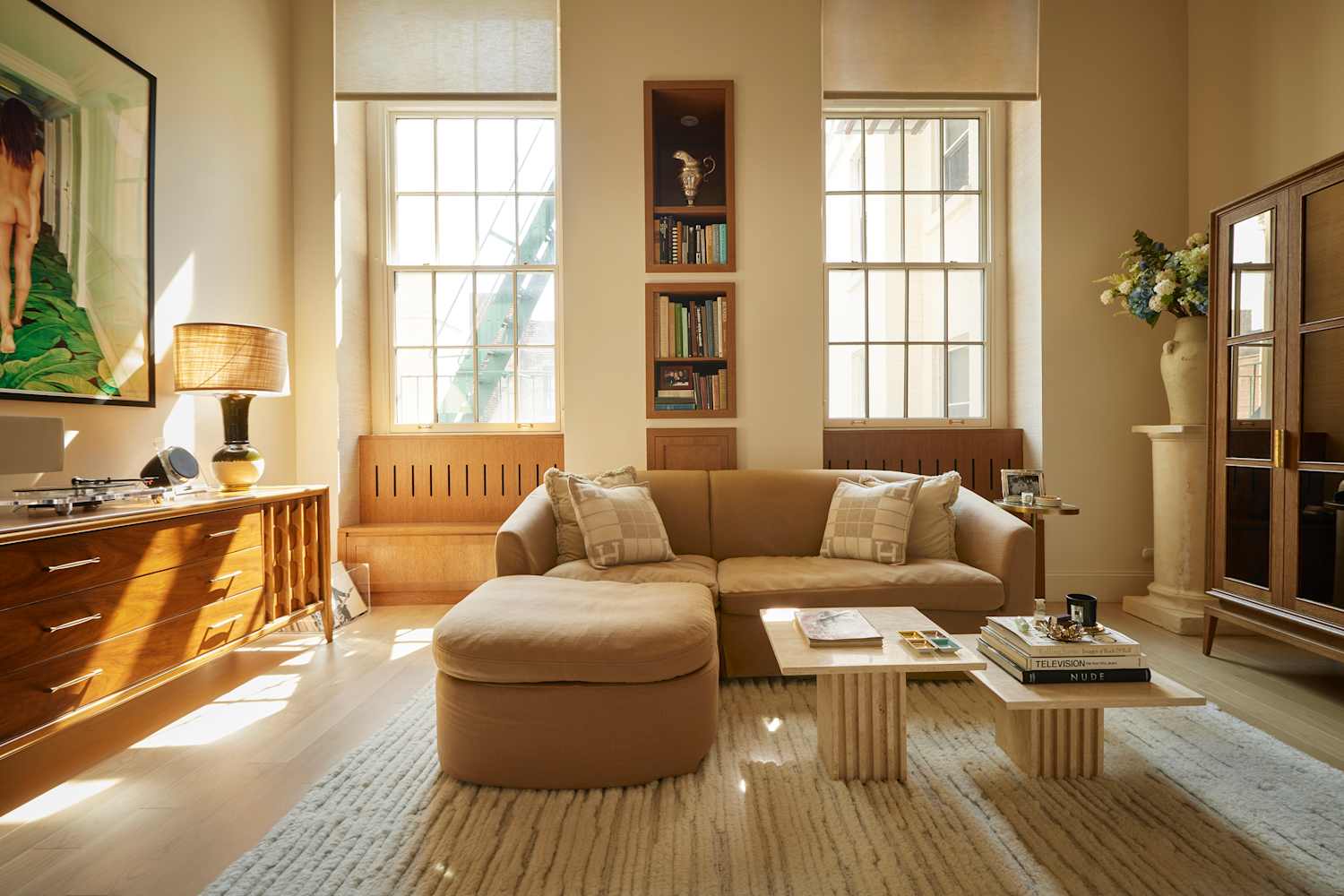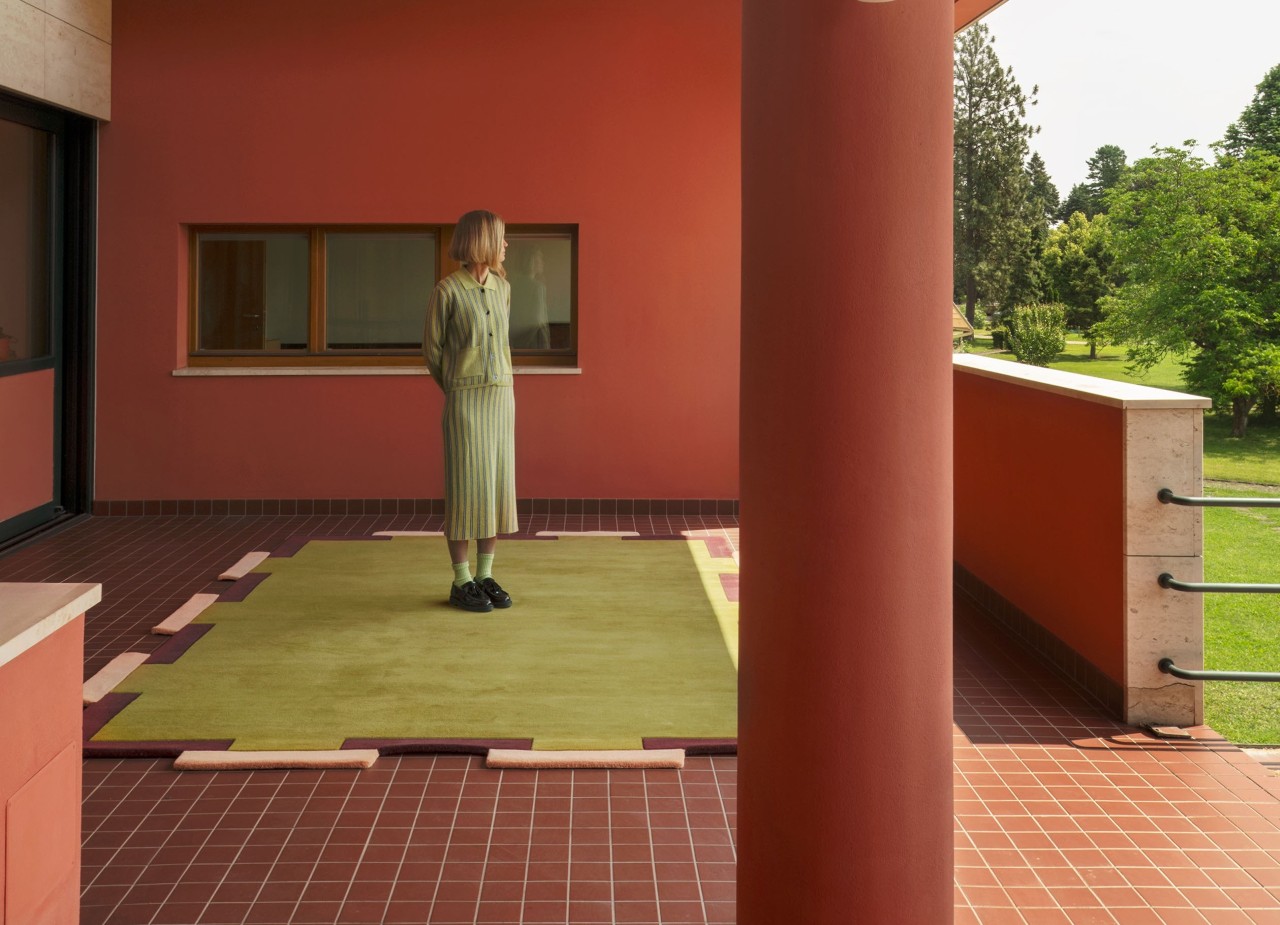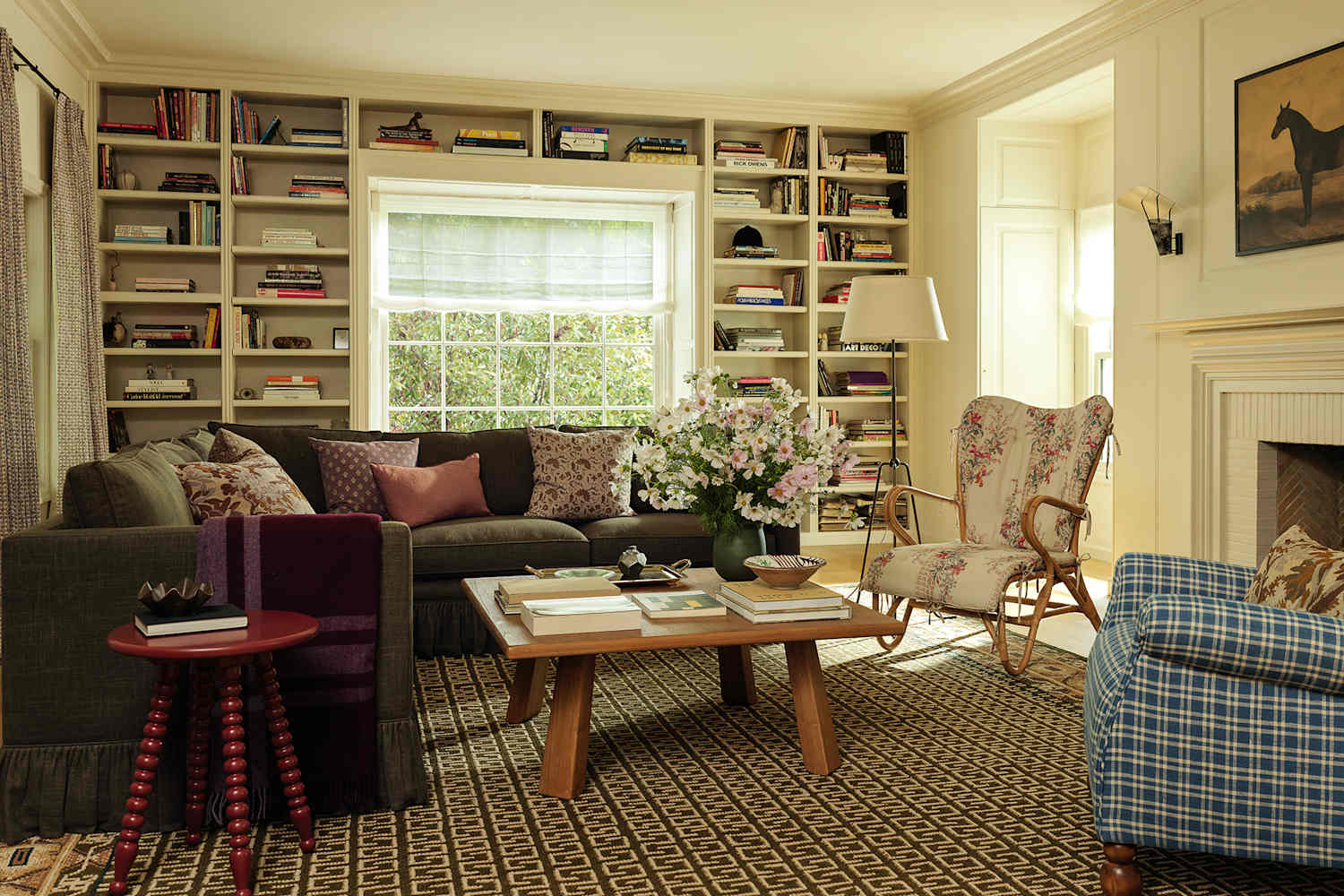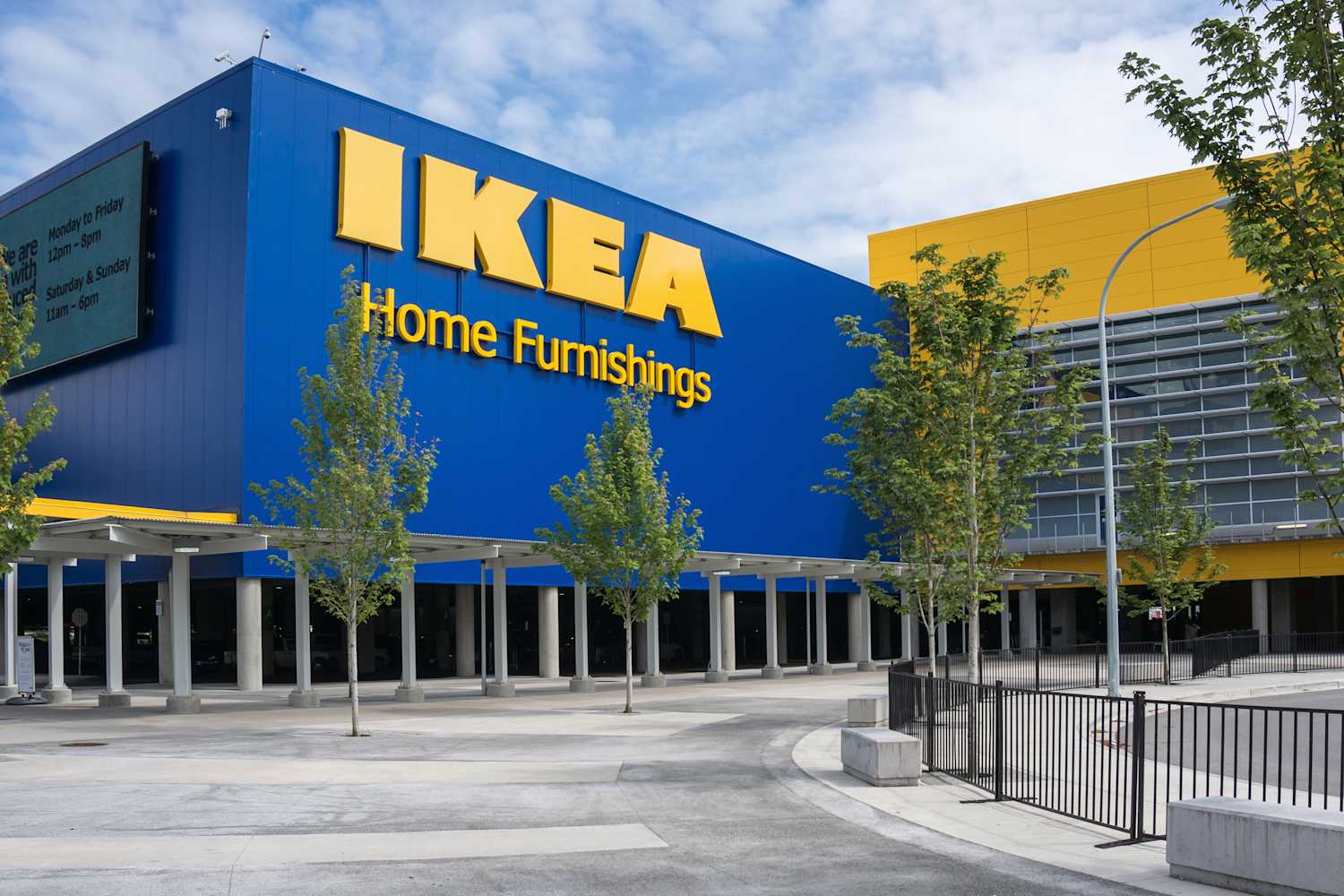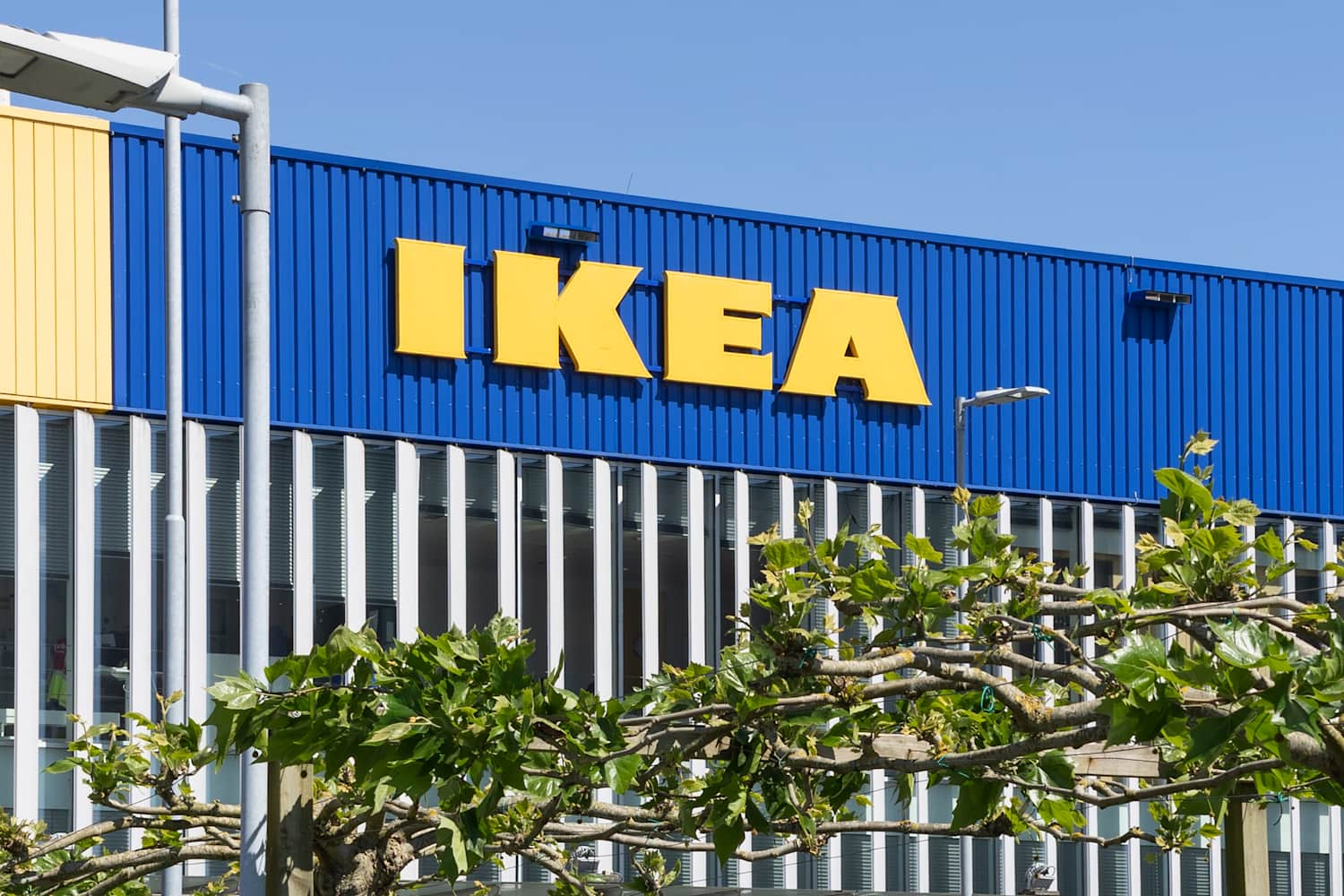Design
Design
[ follow ]
#interior-design #residential-architecture #home-decor #landscape-design #color #light-and-shadow #residential
fromArchDaily
1 day agoSelf-Sufficient Facades: Where Solar Protection Meets Renewable Energy
Spaces of light and darkness are conceived to enhance circulation and spatial directionality, as well as to highlight the colors, textures, and forms of specific architectural elements. That said, the impact of natural light on building facades reveals the need to develop strategies that support energy savings, improve the thermal and visual comfort of interior spaces, and promote the reduction of carbon emissions.
Design
fromdesignboom | architecture & design magazine
21 hours agostepped residence embedded into the hillside maximizes views and privacy in india
Designed by Habitat Architects, the Solan Hill House is a private residence embedded into a sloping site in Himachal Pradesh, conceived as an architecture that grows out of its terrain rather than resting on it. Completed as a response to complex gradients, access conditions, and visual exposure, the project uses the landscape itself as a generator of form, structure, and spatial sequence.
Design
Design
fromdesignboom | architecture & design magazine
22 hours agostudio cochi architects wraps okinawa workspace in double-skin of insect netting and vinyl
Studio Cochi built an on-site woodworking workshop and office in rural Okinawa to control craftsmanship, precision, and timelines for wooden sashes and fixtures.
Design
fromArchDaily
1 day ago"Built Environment: An Alternative Guide to Japan" Exhibition in Montreal Examines Resilient Japanese Architecture
An exhibition at UQAM showcases 80 projects across Japan emphasizing architecture, civil engineering, and landscape resilience to natural disasters and climate change.
fromArchDaily
1 day agoRevisiting 2025: 20 Classic Projects and Defining Stories in Architecture
Every architectural project is the result of deliberate choices. Beyond form and function, buildings embody technical, political, and cultural decisions that shape their relationship with both their surroundings and the people who inhabit them. ArchDaily's AD Narratives series explores these processes by bringing together accounts that trace projects from initial conception to built realization. In parallel, the AD Classics series turns to works of historical significance, presenting not only the stories behind these buildings but also technical drawings
Design
fromArchDaily
1 day agoJiaxing HRNT Cultural Center / THAD SUP Atelier
Jiaxing High-Speed Rail New Town Cultural Center sits at a key node in the city's water and landscape network, with open waterfronts to the north and west and major roads to the south and east. Conceived as the City Living Room and Eye of the Town, it anchors the community core, surrounded by residences, schools, and the hospital. It aims to provide the public with a high-quality, all-day accessible experience.
Design
Design
fromdesignboom | architecture & design magazine
22 hours agovertical wave-like white forms by onion envelop standard hotel in pattaya beach town
The Standard Pattaya hotel translates Pattaya's seaside light, shadow, and movement into architecture organized around four courtyards and wave-like forms.
Design
fromApartment Therapy
1 year agoWe Tested (and Rated!) All the Rugs at West Elm - Here Are the Best to Suit Your Style and Space
West Elm offers a wide selection of stylish, durable area rugs with customization, complimentary swatches, and options suited to many decor styles and practical needs.
Design
fromdesignboom | architecture & design magazine
1 day agoreflective glass surfaces mirror the rocky terrain across andean cabin by rtresarquitectos
Faceted, reflective, elevated cabin in the Andes minimizes visual and physical impact while translating geological conditions into architectural form and improving thermal performance.
Design
fromdesignboom | architecture & design magazine
2 days agodesigner cara campos recycles worn bicycle frames to craft minimalist furniture
Furniture pieces reuse discarded bicycle frames, preserving structural geometry, visible welds, and surface wear to create chairs, tables, and lamps with minimal new material.
Design
fromwww.amny.com
1 day agoBetween Worlds': Musah Swallah art exhibit in Chelsea shows the transformation of surface into message amNewYork
Musah Swallah uses canvas, wood, and cork to foreground material history while making saturated color the structural, inheriting and advancing modern and African painting lineages.
Design
fromApartment Therapy
1 day agoThis 430-Square-Foot Studio Uses Color, Plants, and Custom Details to Feel Surprisingly Expansive
A 430-square-foot Cali apartment transformed into a vibrant, plant-filled, color-rich home that reflects the owner's personality with intentionally scaled furnishings.
fromArchDaily
2 days agoRecasting Cultural Infrastructure: On AAU Anastas's Aga Khan Award-Winning Wonder Cabinet
Among the 2025 Aga Khan Award winners is AAU Anastas and their project, Wonder Cabinet in Palestine, whose central aim is to serve as a haven for culture and creativity and a bridge between design and production. Beyond this meaningful project, AAU Anastas-working from offices in Bethlehem, Palestine, and Paris, France-has built a broad portfolio since 2015. Notable works include Dar Al Majous, a restoration in Bethlehem that challenges
Design
fromDesign Milk
1 day agoDesigntex + nanimarquina Introduce New Textiles as Acts of Care
The collaboration brings together Designtex's deep expertise in high-performance contract textiles and nanimarquina's poetic command of craft, tactility, and the beauty of the imperfect. For both teams, the partnership emerged from an immediate sense of kinship - a shared language of material integrity, color sensitivity, and a respect for heritage techniques reinterpreted for contemporary spaces. "We did that by using performance yarns and intentionally embedding imperfections into the weaving process."
Design
fromApartment Therapy
1 day agoThe Free Design Tool That'll Transform Your Home (It'll Look 10x Better!)
Apartment Therapy's January Cure is a free 20-day program that'll help you refresh your home for the year ahead. Sign up here and get all assignments delivered to your inbox. Go to the Mood Board homepage. Browse our collections of photos, products, and colors, or upload your own images. Tap on an image to add it to your canvas. Move, resize, crop, and layer using our smart tools. You can even add text.
Design
fromArchDaily
2 days agoComing Together and the Making of Place: ArchDaily's January Editorial Focus
Long before architecture took the form of walls, roofs, or cities, it gathered people around fire. The simple fire pit was one of humanity's earliest spatial devices: a place for warmth, food, storytelling, and ritual. Around it, space took shape through proximity rather than enclosure, through shared presence rather than prescribed use. The fire organized bodies in a circle, fostered alliances, and turned survival into collective life.
Design
fromArchitectural Digest
7 months agoGo Bold With the Best Maximalist Bedding
The age of white-washed, super scant, and industrial spaces are behind us. Designers are craving excitement and color this season, manifesting this shift with maximalist bedding sporting punchy colors, big stripes, and winding patterns. An eye-catching bedding set is as good as a full bedroom makeover. Linens have the ability to fully shift the tone of a room: A set of deep cobalt silks can add mystery and allure, while a gingham duvet can take a space from empty to adorable.
Design
Design
fromdesignboom | architecture & design magazine
1 day agopedestrian bridge of serpentine latticework to bring elevated garden to bangkok
A gold-toned, diagonal-lattice pedestrian and cyclist bridge across the Chao Phraya River will create a semi-enclosed, shaded walkway with a central landscaped plaza.
Design
fromTravel + Leisure
1 day agoNashville's Newest Boutique Hotel Has a Listening Library With a Vinyl Collection, an Outdoor Pool, and 3 Bars
The Chloe Nashville opened in Hillsboro Village occupying two restored 1920s craftsman cottages offering 19 rooms, restaurant, bars, pool, and design-forward local hospitality.
fromThe Inspired Room
1 day agoSpring Decorating Ideas That Feel Like Therapy for Your Winter Home (refreshing our snug, entry, and kitchen) - The Inspired Room
Over the years, I've found that after the Christmas decorations come down, I look forward to rearranging rooms or surfaces and adding a small touch of spring. Yes, I said spring. 🙂
Design
fromdesignboom | architecture & design magazine
2 days agoterracotta tiles clad wild souls clean-eating venue's exterior by studiomateriality in athens
Wild Souls is a clean-eating venue designed by studiomateriality and located at the corner of two busy streets in the Kolonaki district of . Positioned within a dense urban context, the project integrates into the city's daily movement while establishing a clear architectural identity at the street corner. The exterior is fully clad in terracotta tiles, giving the building a consistent material presence on all visible .
Design
fromdesignboom | architecture & design magazine
2 days agoforest of steel pillars creates swinging installation enveloped in cloud-like mist in china
OAS/S-ELY is an architectural art installation by Zhide Architectural Design located on Huanglong Island in Shengsi County, Zhoushan City, Zhejiang Province, . Positioned within a coastal landscape shaped by sea winds and rocky reefs, the project functions as an art gateway that mediates between past, present, and future narratives through form, material, and environmental interaction. The installation is developed as part of the 'Island Co-construction Project,' a long-term rural sustainability initiative initiated by Ideal in the Wild.
Design
Design
fromdesignboom | architecture & design magazine
2 days agotubular concrete ring by HCCH studio shapes cycling rest pavilion among chinese hills
Circular concrete ring pavilion provides cyclists a rest stop and elevated viewing promenade at Mount Luofu, integrating concrete volumes, seating, and bamboo-textured finish.
fromDezeen
2 days agoBeyer Blinder Belle completes Brooklyn skyscraper on "flatiron-like site"
Architecture studio Beyer Blinder Belle has completed The Brook in Downtown Brooklyn, a 52-storey mixed-use skyscraper that was informed by historic Brooklyn architecture. The Brook sits in a triangular site next to the Brooklyn Tower at the confluence of DeKalb Avenue, Flatbush Avenue and Fulton Street, in one of "the most prominent and complex intersections in the entire borough", according to international American studio Beyer Blinder Belle (BBB).
Design
fromItsnicethat
2 days agoThe sketchbook is an illustrator's best friend: Clay Hickson on why drafting and practice are key
Illustrator, designer and co-publisher behind Caboose Books, Clay Hickson joined us in Los Angeles to talk about finding self expression through chosen sketchbooks and pens, both of which are key to his own creative practice and illustration process.
Design
Design
fromwww.archdaily.com
4 days agoFrom Material Intelligence to Circularity: Lessons from Architecture in 2025
Architects prioritize material innovation in 2025—agricultural waste, recycled plastics, and living materials—balancing tradition, circularity, and material intelligence for resilient, low-carbon construction.
Design
fromApartment Therapy
3 days agoA 538-Square-Foot Brooklyn Studio Has a Private Patio (and It Feels like a Secret Garden!)
A 538-square-foot Murray Hill studio was transformed into a light-filled, cozy home combining family craftsmanship, grass-cloth peel-and-stick wallpaper, and a mix of high-and-low furnishings.
fromDesign Milk
3 days agoThe Solae Lamp by Cecilie Manz for Fritz Hansen Steps Outside
Dining outside can be quite a beautiful thing - as the sun sets over a delicious meal, everything can feel just right - except, of course, when the night begins to fade. Enter Solae by Cecilie Manz, a portable, directional lamp that merges an ethos in nature with the quality and craftsmanship we've come to know and love from Fritz Hansen. Solae marks Manz's first rechargeable, portable lamp, offering new frameworks for how we might think about objects in the future.
Design
fromYanko Design - Modern Industrial Design News
3 days ago5 Best Transparent Audio Devices That Show What's Inside - Yanko Design
Transparent design has moved beyond gimmick territory into something genuinely compelling. When Nothing started showing off circuit boards through clear plastic, the tech world noticed. Now that aesthetic has matured into a legitimate design movement where form and function create something worth displaying. Audio equipment benefits particularly well from this treatment because the internals actually matter to the listening experience, turning technical components into visual storytelling.
Design
fromdesignboom | architecture & design magazine
3 days agoA' design award and competition reveals top creative nations in world design ranking 2025
The World Design Rankings (WDR) has unveiled its 2025 results, providing a snapshot of how design-led innovation is distributed across the globe. The ranking offers a deep dive into the creative power of 114 nations, measured by their success within the A' Design Award. The latest data confirms China's continued dominance in the top spot, followed closely by the United States, Japan, Italy, and Hong Kong.
Design
Design
fromdesignboom | architecture & design magazine
4 days agonear figure envisions evolving green concrete museum unfolding along helsinki harbor
A Finland museum explores 'Near Figure' architecture that balances recognizability and abstraction through evolving, deformable forms and spatial ambiguity.
fromItsnicethat
3 days ago"Friction keeps you awake and alert": KarlssonWilker on harnessing the art of the unexpected
KarlssonWilker tends to stay away from pastiche and mimicry, prioritising modular communication and original editorial mechanics in order to centre emotional intelligence and clarity. In the studio's identity for Calder Gardens, a green space and art museum in Philadelphia, the team began with no plan whatsoever. For projects for the broader public, KarlssonWilker tries to be "oblivious to tastes and possibilities", because usually everything from physical constraints to board member opinions will cut down the studio's initial ideas.
Design
Design
fromdesignboom | architecture & design magazine
3 days agomer architects references finnish fishing huts with coastal home on langholmen island
A compact timber house on Långholmen links two volumes under a folded roof around a covered outdoor room, anchoring to jetty, paths, rock, and pines.
Design
fromdesignboom | architecture & design magazine
3 days agoluminous layers of colored wire mesh weave tea ceremony house by moriyuki ochiai
Layered wire mesh creates permeable tea house enclosures that modulate light, sightlines, airflow, and spatial perception through material, layering, and moiré effects.
Design
fromdesignboom | architecture & design magazine
3 days agoprotoscapes reworks decommissioned pier into public-facing resort on chinese island
Dongshan West Bay Resort transforms a decommissioned fishing pier into a diving-themed coastal resort whose forms respond to tidal rhythms, light, and coastal topography.
Design
fromdesignboom | architecture & design magazine
4 days agobiological growth patterns inform sculptural furniture series by vincent decat
The Living Series transforms functional furniture into sculptural, organism-inspired forms that prioritize material experimentation, tactility, and enduring visual character.
fromApartment Therapy
4 days agoThe "Sandwich Method" Is the Simple Design Rule That Fixes Most Rooms (Especially Small Ones!)
You know the feeling: The paint is dry, the furniture looks good, but somehow the whole thing still feels unfinished. Designers have a trick for that, and it's surprisingly easy. Called the "Sandwich Method," it helps to create a sense of balance in a room through echoing a color at the top and base of the room - and letting the center section fall into place.
Design
fromYanko Design - Modern Industrial Design News
4 days agoThis Floating River Cabin in Serbia Is Our Dream Weekend Escape - Yanko Design
This floating cabin is located on a stationary pontoon along the Sava River in the Sava Shipyard, one of the most renowned shipyards in the region. Measuring eight-by-six meters, this compact yet thoughtfully designed structure maximizes every inch of space. It is an open-concept structure that is created for leisurely afternoons, weekend stays, and intimate gatherings for their family and friends. All elements of the design are meant to give the family a peaceful retreat and haven from the daily grind.
Design
Design
fromwww.archdaily.com
5 days agoIndigenous Materials Towards an African Modernity: An Interview with Worofila
Worofila combines vernacular materials and modern techniques to produce bioclimatic, ecological architecture that empowers communities and advances sustainable, contextually relevant African urban development.
fromdesignboom | architecture & design magazine
5 days agoolin petzold hides minimalist 'casetta tessino' treehouse in the woods of switzerland
Dubbed Casetta Tessino, a tiny and modern treehouse by Olin Petzold stands in the woods of Valle Onsernone, Switzerland. Completed in early 2024, the elevated timber structure sits apart from an existing house on a steep, forested plot near the village of Loco, positioned as a place for writing and short-term retreat. The commission came from a Swiss artist and climate activist seeking a secluded writer's workspace away from the main house.
Design
Design
fromdesignboom | architecture & design magazine
4 days agothree interconnected towers compose DLF's vertical city transforming tel aviv skyline
A three-towered, 470-meter mixed-use vertical city consolidates living, working, cultural, and leisure functions with continuous green infrastructure to redefine dense urban development.
fromColossal
4 days agoTraditional Indian Basketweaving Techniques Translate into Contemporary Installations
From a single material, a Hyderabad-based design studio creates a wide range of site-specific installations, furnishings, and decor. It's all in the name of the firm, The Wicker Story, which was founded in 2019 by architect Priyanka Narula. Capable of being formed into everything from abstract constructions to functional objects, the natural material lends itself a huge variety of pieces that vary in size and complexity.
Design
[ Load more ]
